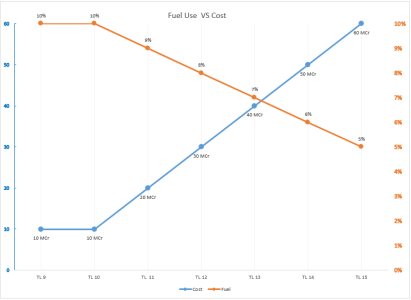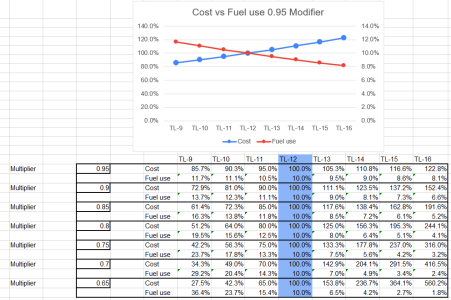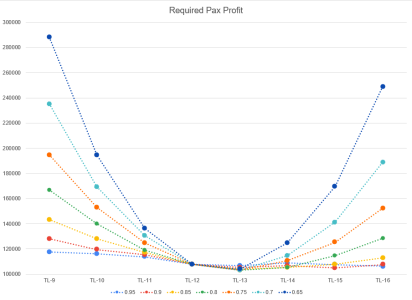mike wightman
SOC-14 10K
MT introduced reduced jump fuel but it didn't kick in until higher TLs
TNE then had this rule for jump fuel:
"The fuel necessary fora jump of 1 parsec is equal to the total volume of the jump drive machinery multiplied by 10 and divided by the drive's maximum jump number. Thus, ships with higher jump performance make more efficient use of fuel at short distances."
Note that both had a reduced jump fuel requirement so I have converted them back to the standard 10% per jump number.
| TL | 9->16 | 17 | 18 | 19 | 20 | 21 |
| jump fuel | 10% | 8% | 6% | 4% | 2% | 1% |
TNE then had this rule for jump fuel:
"The fuel necessary fora jump of 1 parsec is equal to the total volume of the jump drive machinery multiplied by 10 and divided by the drive's maximum jump number. Thus, ships with higher jump performance make more efficient use of fuel at short distances."
Note that both had a reduced jump fuel requirement so I have converted them back to the standard 10% per jump number.







